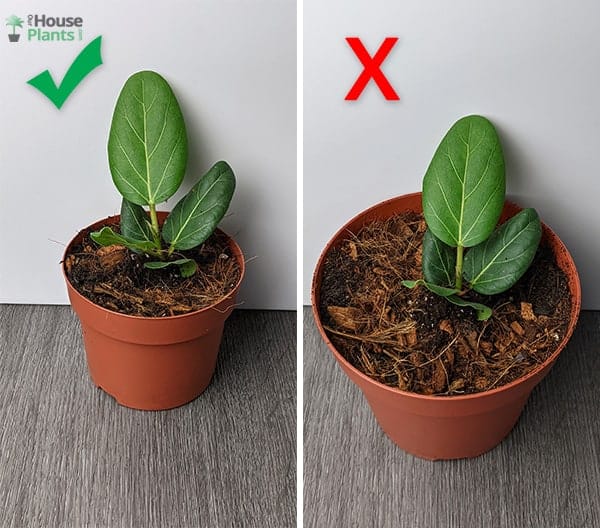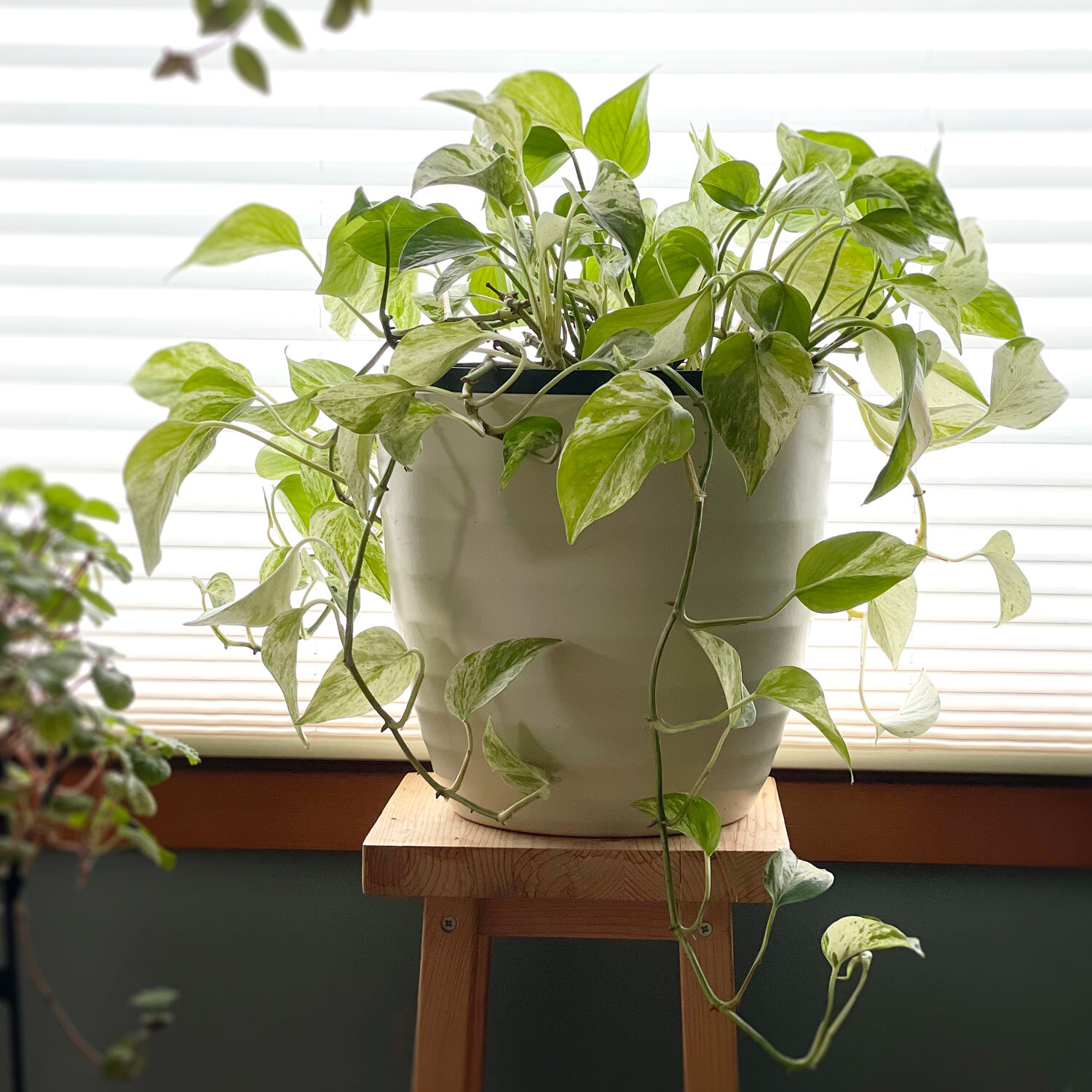The best time to repot houseplants is during spring or early summer. Plants grow actively in these seasons.
Repotting houseplants is essential for their health and growth. Over time, plants outgrow their pots, leading to restricted root development and nutrient deficiencies. Spring and early summer provide ideal conditions for repotting because plants are in their active growth phase.
This period allows them to recover quickly from the transplant shock and establish roots in the new pot. Choose a pot slightly larger than the current one to give roots ample space. Use fresh potting soil to ensure proper nutrients. Regularly repotting houseplants promotes vigorous growth, better flowering, and overall plant vitality. Keep an eye on your plants, and they’ll reward you with lush, vibrant foliage.
Signs Your Plant Needs Repotting
Repotting houseplants is essential for their health. But how can you tell when it’s time? Recognizing the signs that your plant needs repotting can save it from stress and ensure it thrives.
Root Bound Issues
One major sign is root bound issues. When roots grow in circles around the pot, it’s root bound. Check the drainage holes. If roots are poking out, your plant needs more space.
- Roots visible on the soil surface
- Roots escaping from the drainage holes
- Pot shape bulging due to root growth
A root bound plant may also have stunted growth. The leaves might turn yellow, and the plant could be more thirsty than usual.
Soil Degradation
Another sign is soil degradation. Over time, the soil loses nutrients. It may become compacted and hard. This can prevent water from reaching the roots.
| Signs of Soil Degradation |
|---|
| Water sits on top of the soil |
| Soil looks dry and crumbly |
| Plant shows nutrient deficiency signs |
Degraded soil can lead to poor plant health. Fresh soil provides necessary nutrients and better drainage.

Credit: www.ourhouseplants.com
Seasonal Considerations
Understanding the best time to repot houseplants ensures their growth and health. Seasonal considerations play a crucial role in determining the optimal period for repotting. Here’s a detailed look at how different seasons affect houseplant repotting.
Spring Benefits
Spring is often the best season to repot houseplants. During spring, plants come out of their dormant phase. They begin to grow actively. This makes it easier for them to recover from the stress of repotting. The longer days and increased sunlight provide the necessary energy.
Benefits of repotting in spring include:
- Accelerated growth: Plants have more energy to produce new roots.
- Enhanced nutrient uptake: Fresh soil provides essential nutrients.
- Better adaptation: Plants adapt faster to new pots and environments.
Summer Challenges
Summer presents its own set of challenges for repotting houseplants. The high temperatures and intense sunlight can stress plants. Water requirements increase during summer, making it crucial to maintain consistent moisture levels. Repotting in summer can cause additional stress, as plants are already working hard to survive the heat.
Challenges faced during summer include:
- Heat stress: Plants can wilt quickly in high temperatures.
- Increased watering needs: Soil dries out faster, requiring frequent watering.
- Potential for shock: Moving plants can cause transplant shock in extreme heat.
Consider these seasonal factors carefully to ensure your houseplants thrive.
Choosing The Right Pot
Repotting houseplants can greatly improve their growth and health. Selecting the right pot is crucial for success. This section will guide you through the essentials of choosing the perfect pot for your houseplants.
Size Matters
Picking the correct pot size is very important. A pot that’s too big holds too much water. This can lead to root rot. A pot that’s too small restricts root growth. This stunts the plant’s development.
| Plant Size | Recommended Pot Size |
|---|---|
| Small (4-6 inches) | 6-8 inches pot |
| Medium (8-12 inches) | 10-12 inches pot |
| Large (14+ inches) | 14+ inches pot |
Material Choices
The material of the pot affects plant health too. Common materials include plastic, terracotta, and ceramic.
- Plastic pots are lightweight and hold moisture longer.
- Terracotta pots are porous and allow air to reach roots. They dry out faster.
- Ceramic pots are heavy and provide good insulation. They can be decorative.
Choose the material based on your plant’s needs and your environment. For example, terracotta suits cacti and succulents. Plastic is good for moisture-loving plants.
Preparing Your Plant
Preparing your plant for repotting is crucial. It ensures a smooth transition for your beloved houseplant. Follow these steps to help your plant adapt better to its new pot.
Watering Tips
Water your plant well a day before repotting. This keeps the roots hydrated during the process. Avoid watering just before you repot, as it makes the soil messy.
Check the moisture level of the soil. If it feels dry, water it. Ensure you don’t overwater. Excess water can harm the roots and make the repotting difficult.
Root Pruning
Inspect the roots when you remove the plant from its pot. Look for any dead or rotting roots. Use clean scissors to trim these away.
Healthy roots should be white or light tan. Prune back any overly long roots. This encourages new growth and helps the plant settle into its new pot.
Here’s a simple table to guide you:
| Step | Description |
|---|---|
| Water | Water a day before repotting. |
| Check Moisture | Ensure soil is not too dry or too wet. |
| Inspect Roots | Look for healthy, white roots. |
| Trim Dead Roots | Remove dead or rotting roots. |
| Prune Long Roots | Encourage new growth by trimming long roots. |
- Use clean tools for root pruning.
- Ensure the new pot has drainage holes.
- Choose a pot slightly larger than the current one.
Repotting can be stress-free if you prepare your plant well. Follow these tips for a successful repotting experience.
Repotting Techniques
Repotting houseplants can be a rewarding task. It ensures your plants stay healthy and vibrant. Knowing the right techniques is crucial. Follow these simple steps for successful repotting.
Removing The Plant
First, gently loosen the soil around the plant. Carefully turn the pot upside down. Support the plant with your hand. Tap the pot’s bottom to release the plant. If the plant is stuck, use a knife to loosen the edges. Avoid damaging the roots.
Soil Replacement
Once the plant is out, inspect the roots. Trim any dead or rotting roots. Choose a pot slightly larger than the previous one. Fill the new pot with fresh soil. Make a hole in the center for the plant.
| Step | Action |
|---|---|
| 1 | Loosen the soil around the plant |
| 2 | Turn the pot upside down |
| 3 | Tap the pot’s bottom |
| 4 | Inspect and trim roots |
| 5 | Fill the new pot with soil |
- Choose the right soil type for your plant.
- Ensure the new pot has drainage holes.
- Water the plant after repotting.
- Place the plant in the new pot.
- Fill around the plant with soil.
- Press the soil gently to remove air pockets.
Repotting can be easy with the right techniques. Follow these steps for healthy houseplants.
Post-repotting Care
Repotting houseplants is a crucial part of plant care. But, what you do after repotting is equally important. Proper care helps plants adjust and thrive in their new pots.
Watering Schedule
After repotting, adjusting the watering schedule is essential. Overwatering can lead to root rot, while underwatering can stress the plant.
- First Week: Water the plant lightly to settle the soil.
- Second Week: Check soil moisture before watering. Ensure the top inch is dry.
- Third Week Onwards: Resume your regular watering schedule.
Light Requirements
Proper light is crucial for the plant’s recovery. Different plants have different light requirements.
| Plant Type | Light Requirement |
|---|---|
| Succulents | Bright, indirect light |
| Tropical Plants | Moderate to low light |
| Flowering Plants | Bright light |
Avoid placing newly repotted plants in direct sunlight. Gradually introduce them to their preferred light conditions.
Common Mistakes To Avoid
Repotting houseplants at the right time is crucial for their health. But many people make common mistakes. Understanding these mistakes can help your plants thrive.
Over-potting
Over-potting is a frequent error. Choosing a pot that’s too big can harm your plant. The plant’s roots might struggle to absorb water. This can lead to root rot.
Use a pot that is only one size larger. For example, if your plant is in a 4-inch pot, move it to a 6-inch pot. This helps the roots grow properly.
Incorrect Soil Mix
Using the wrong soil mix can also be harmful. Different plants need different types of soil. For example, succulents need sandy soil. Ferns prefer rich, moist soil.
Check what type of soil your plant needs. You can find this information on plant care tags or online. Make sure to use the correct soil mix. This will provide the right nutrients for your plant.
| Plant Type | Preferred Soil Mix |
|---|---|
| Succulents | Sandy, well-draining soil |
| Ferns | Rich, moist soil |
| Orchids | Special orchid mix |
Avoid these common mistakes to keep your houseplants healthy. Always research your plant’s needs before repotting.

Credit: www.swansonsnursery.com
Expert Advice
Repotting houseplants can be tricky. It’s essential to know the best time for this task. Experts share valuable tips for success. Follow these guidelines to keep your plants thriving.
Professional Tips
- Spring is the ideal time for repotting.
- Choose a pot that is one size larger.
- Water the plant a day before repotting.
- Use fresh, high-quality potting soil.
- Gently loosen the roots before placing in the new pot.
Best Practices
Follow these best practices to ensure your houseplants stay healthy and happy:
- Check for root-bound plants. Look for roots growing out of drainage holes.
- Repot during the plant’s growing season. This helps the plant recover faster.
- Avoid repotting during winter. Plants are usually dormant and may not adapt well.
- Ensure the new pot has proper drainage. This prevents root rot.
- After repotting, place the plant in a spot with indirect light. Direct sunlight can stress the plant.
| Step | Action |
|---|---|
| 1 | Select a slightly larger pot. |
| 2 | Water the plant a day before. |
| 3 | Gently remove the plant from its old pot. |
| 4 | Loosen the roots carefully. |
| 5 | Place the plant in the new pot with fresh soil. |

Credit: thehouseplantguru.com
Frequently Asked Questions
Can You Repot Houseplants Any Time Of Year?
Yes, you can repot houseplants any time of year. However, spring and early summer are ideal. This allows plants to recover faster.
Is It Okay To Repot Houseplants In Winter?
Repotting houseplants in winter is not ideal. Plants are usually dormant and may not adapt well.
How To Know If A Plant Needs To Be Repotted?
Check for roots growing out of the drainage holes. Observe if the plant appears root-bound or lacks growth. Notice if the soil dries out quickly. Inspect for yellowing leaves or stunted growth. Repot if the plant seems top-heavy or unstable.
Should You Remove Old Soil When Repotting?
Yes, remove old soil to prevent disease and pests. Fresh soil provides better nutrients and improves plant health.
Conclusion
Repotting houseplants at the right time ensures healthy growth. Spring and early summer are ideal. Monitor your plants for signs they need repotting, like roots growing through drainage holes. Regular care and attention can help your houseplants thrive. Happy gardening!

My mission is to help you bring the beauty of nature indoors with expert advice, detailed plant care guides, and creative design ideas.





Leave a Reply